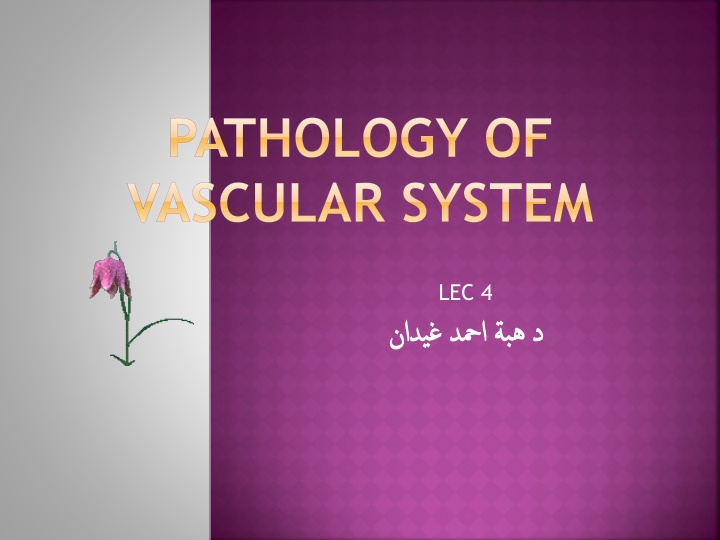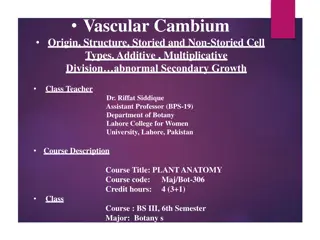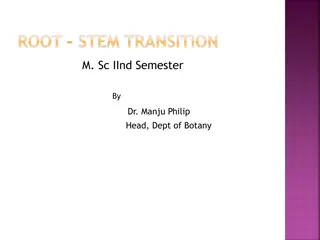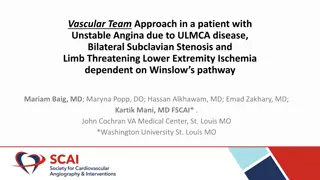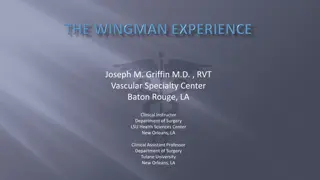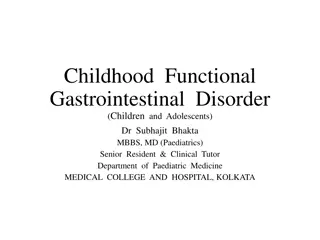Vascular Disorders: Raynaud's & Hemangiomas
Raynaud's disease and Raynaud's phenomenon involve vasospasms in the fingers or toes, while hemangiomas are benign tumors of abnormal vessels. Explore the histologic and clinical variants of hemangiomas and learn about angiosarcomas, malignant endothelial neoplasms.
Download Presentation

Please find below an Image/Link to download the presentation.
The content on the website is provided AS IS for your information and personal use only. It may not be sold, licensed, or shared on other websites without obtaining consent from the author.If you encounter any issues during the download, it is possible that the publisher has removed the file from their server.
You are allowed to download the files provided on this website for personal or commercial use, subject to the condition that they are used lawfully. All files are the property of their respective owners.
The content on the website is provided AS IS for your information and personal use only. It may not be sold, licensed, or shared on other websites without obtaining consent from the author.
E N D
Presentation Transcript
PATHOLOGY OF VASCULAR SYSTEM LEC 4
Raynauds disease and Raynauds phenomenon Raynaud s disease refers to attacks of pallor or cyanosis of the fingers or toes. It is caused by intense vasospasm of local small arteries or arterioles. This disease is seen principally in otherwise healthy young females. The arterial and arteriolar walls are devoid of structural changes. The cause is unknown but is probably a reflection of exaggerated normal vasomotor responses to cold or emotion. Raynaud s phenomenon is clinically similar to the above but it is secondary to arterial narrowing induced by such diseases as SLE, systemic sclerosis, atherosclerosis or Buerger s disease.
Tumors and Tumor-like Conditions Hemangioma Hemangiomas are very common benign tumors characterized by increased numbers of normal or abnormal vessels filled with blood; they may be difficult to distinguish from vascular malformations. Common in infancy and childhood and constitute 7% of all benign tumors of infancy and childhood; most are present from birth and expand along with the growth of the child, many of the capillary lesions eventually regress spontaneously. hemangiomas (angiomas) are either most commonly localized; or angiomatosis involve entire extremity. The majority is superficial lesions, often of the head or neck, but they may occur internally, with nearly one third in the liver. Malignant transformation occurs rarely (if at all).
There are several histologic and clinical variants 1- Capillary Hemangioma: Juvenile hemangioma "strawberry type" of the skin of newborns is extremely common, and may be multiple. It grows rapidly in the first few months, begins to fade when the child is 1 to 3 years old, and regresses by age 7 in 75% to 90% of cases. Gross: bright red to blue lesion of the skin or slightly elevated. Mic: aggregates of closely packed, thin-walled capillaries, usually blood filled and lined by a flattened endothelium. 2- Cavernous hemangioma: Less common than the capillary hemangioma, characterized by the formation of large, dilated vascular channels, & frequently involve deep structures (liver) . 3- Pyogenic granuloma (lobular capillary hemangioma): Pregnancy tumor is a pyogenic granuloma that occurs in the gingiva of 1% of pregnant women and regresses after delivery. Red nodule attached by a stalk to the skin and gingival or oral mucosa, which bleeds easily and is often ulcerated. Approximately one third of lesions develop after trauma, resemblance to granulation tissue.
Malignant Tumors (angiosarcoma). Angiosarcomas are malignant endothelial neoplasms. They can be found anywhere in the body but most often in the skin, soft tissue, breast, and liver. They occur in both sexes and more often affect older adults. hepatic angiosarcomas are associated with distinct carcinogens, (arsenic, Thorotras, and vinyl chloride). Gross: either small multiple red nodules; OR large, fleshy masses with central necrosis. Mic:, all degrees of differentiation of these tumors may present (from well differentiated angiosarcoma (hemangiom like), to anaplastic angiosarcoma .
moderately differentiated angiosarcoma with dense clumps of irregular, moderate anaplastic cells and distinct vascular lumens
